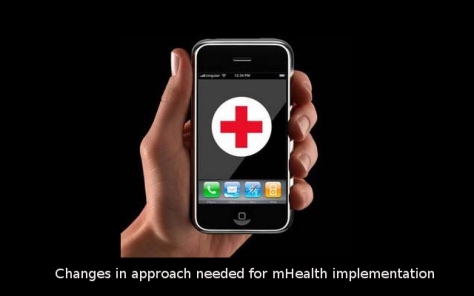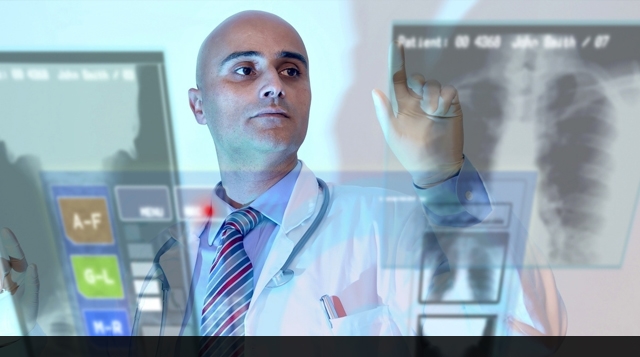An ordinary blood test & use of the protocol may protect almost 70,000 people in America annually of deaths due to sepsis in the hospitals, based upon a content by Donald Berwick, M.D., & Robert Pearl, M.D., posted in Forbes. Regardless of such availability, affordable preventive steps, sepsis remains a prominent reason for death in the US hospitals. Some other sepsis intervention programs in addition have given a hand to reduce infection percentage. A two year combined program in 9 hospitals in USF’s Integrated Nursing Leadership Program really improved sepsis death rates by 54.5% every year, along with nurses screening new patients during admission and also at the start of every shift, fast-tracking a diagnosis for the patients with a minimum of 2 signs of possible sepsis. During August, last year, 2 doctors written in the Forbes debated that the simple blood test along with adopting a protocol could quite possibly protect around 70,000 People in the America every year from being killed of sepsis in the hospitals. Continue reading Prediction of sepsis is easy with EHRs
Tag Archives: develop physician CPOE systems
Changes in approach needed for mHealth implementation
In order to truly become a disruptor in the healthcare industry, mHealth needs to break out of the shackles restricting its widespread use. Although the area shows a lot of promise to bring about major changes in healthcare delivery, the slow pace of its adoption has resulted in many industry leaders quoting the benefits to be speculative. They are generally the elderly lots who have throughout their careers seen various such disruptions start, show a lot of promise and then frizzle away. They are waiting for this one to stand the test of time and meet the changing requirements of the industry. There are enough indications already to suggest that mHealth has the elements to change the healthcare delivery on its head and transform it completely. Infact mHealth is the result of unsustainability of current healthcare spending, rapid growth of wireless connectivity, and the need for more precise and individualized medicine.
So the pertinent question which comes to mind is that if certain obstacles have resulted in the emergence of a solution, what has stopped its widespread use? In order to achieve the purpose, some roadblocks have been identified. They are as follows:
- Complexities which exist in the healthcare system related to current drivers of reimbursement
- Apprehensions of the part of clinicians as they expect the patient-physician relationship to weaken further; with a likelihood of an increase in their workload
- Challenges to the appropriate use and validation of mHealth technologies
- Possibility of downloading apps which are not very useful and can possibly even have a detrimental effect if used
 mHealth intends to transform healthcare by addressing inefficient practices and various challenges faced by clinicians and consumers. The real beginning of the mHealth surge will start the day Physicians stop being wary of recommending apps. And for that to happen, there needs to be more availability of evidence. It is only by doing a systematic research on the impact of mobile technologies on health outcomes and showing positive results, on a continuous basis, that reliable evidence can be gathered. Also, for its widespread usage and subsequent acceptance, partnerships with governments become a critical factor. The key here is to identify and engage very early, by identifying the right people within the setups to provide support and handing them over to scale up after reaching a certain level of success. Achieving scale without such an approach i.e. involvement on the part of the government, is next to impossible.
mHealth intends to transform healthcare by addressing inefficient practices and various challenges faced by clinicians and consumers. The real beginning of the mHealth surge will start the day Physicians stop being wary of recommending apps. And for that to happen, there needs to be more availability of evidence. It is only by doing a systematic research on the impact of mobile technologies on health outcomes and showing positive results, on a continuous basis, that reliable evidence can be gathered. Also, for its widespread usage and subsequent acceptance, partnerships with governments become a critical factor. The key here is to identify and engage very early, by identifying the right people within the setups to provide support and handing them over to scale up after reaching a certain level of success. Achieving scale without such an approach i.e. involvement on the part of the government, is next to impossible.
Before beginning any mHealth project, it is very important to take into account 4 dimensions – People, places, payment and purpose. Importance of considering these factors is highly critical in determining the outcome. The following needs to be taken into account while addressing the dimensions.
- People: Technological platforms to be used have to be chosen keeping in mind the demographics and preferences of the consumers and health professionals who are likely to use them. A platform with exceptional features and lacking on usability is of no use.
- Places: There is a need to have a strong backbone of network with good accessibility and reliability. This has a major bearing on how and when mHealth is used. If the functionalities available are complex, then in order to leverage those, the required download speed and bandwidth capacity needs has to be available as well.
- Payment: Evidence-based standards should be used to link payment with quality outcomes. Additionally, organizations dealing with patient data should adhere to the required policies to address privacy and security.
- Purpose: In order to be effective the strategy should be such as to align with complexities involved in case management and various clinical objectives.
You can hire developers from top medical software development company in India who can help you build your applications within allocated budgets and time schedules.
We provide healthcare IT services. If you would like to know more about the expertise of our certified healthcare software developers, please get in touch with us at Mindfire Solutions.
Major initiatives in Health IT in 2013
As the push for infusing information technology into the healthcare space continues, each year is expected to have its own share of activities and initiatives which get implemented. All of these are finally expected to synergize and lead to a highly efficient and cost effective healthcare system in the future. Each such initiative has a starting time keeping in mind the change it is expected to bring about and the contribution it would make to the system over time. Also, all such initiatives are expected to have certain gestations periods to start offering real benefits. However, the build-up years are bound to result in certain levels of uncertainty and heartburn amongst all concerned stakeholders – owing to major changes affecting the status quo at any point in time.
Year 2013 saw some such Health IT initiatives getting implemented. A few of those were in response to concerns arising on the way and a few with the foresight of where the industry wants to reach. The important wants are as follows:
The HIPAA Omnibus Rule:
 As an expansion to the Health Insurance Portability and Accountable Act, four new rules have been implemented. Contractors, subcontractors and other business associates of healthcare entities who deal with patient data are now expected to protect it as otherwise a provider would. There are penalties in place as well for cases of non-compliance. Also, how patient information is to be used for marketing purposes and for raising funds have defined guidelines to follow no. In short, no patient information can be sold without the required permission in place. With the digital world in a perennial expansion mode, the new rule is expected to protect patient privacy and safeguard patient health information.
As an expansion to the Health Insurance Portability and Accountable Act, four new rules have been implemented. Contractors, subcontractors and other business associates of healthcare entities who deal with patient data are now expected to protect it as otherwise a provider would. There are penalties in place as well for cases of non-compliance. Also, how patient information is to be used for marketing purposes and for raising funds have defined guidelines to follow no. In short, no patient information can be sold without the required permission in place. With the digital world in a perennial expansion mode, the new rule is expected to protect patient privacy and safeguard patient health information.
Guidance for Mobile Medical Application:
This was provided by the Food and Drug Administration after an almost 2-year wait. The guidelines are enforced only on a certain percentage of apps which pose a threat to patients if they fail to perform what they intend to. Thus, only a small subset of the overall app market falls under its purview. In its current state, the oversight is on all those mobile medical applications which are aimed at being used as accessories to regulated mobile devices or which are likely to transform mobile platforms into regulated medical devices. The agency has been very particular to apply those regulatory standards which it otherwise applies to medical devices. This clarity is also very relevant to the developer community as they build newer and more effective solutions. There were some omissions in the guidelines which include:
- definition of what are regulated i.e. how to determine what requires regulation and what necessitates enforcement discretion
- defining the levels of risk for mobile devices & their accessories
- disease intended uses compared to unregulated, wellness intended uses
- exact meaning of an accessory to a medical device
Meaningful Use Stage 2 deadline extension:
Senators may have asked for a reboot of the system, some senior leaders might have questioned its true benefits; MU is here to stay. However, there is widespread consensus on some of the issues which stand as hurdles in its implementation – with the major one concerning the timeline. As a response to this, CMS proposed Meaningful Stage 2 implementation to be extended through 2016. This will result in the roll out of stage 3 getting pushed to 2017. There has however not been a shift in the start date resulting in drawing flak from some CIOs. They are not convinced about the intent of such a move – that of allowing time for fine tuning for the next stage by extending the deadline and not bring in flexibility in the start date which seems to be the need of the hour. Effectively, it means that those providers who do not start on time will miss out on a payment cycle.
Use of Big Data:
It might be early days for big data usage in healthcare systems; providers who have started using them for their clinical and administrative work have already started noticing the benefits. From reducing mortality rates, bringing down instances of readmission to performing evidence-based budgeting, there are predictions already of saving close to $450 billion in healthcare costs if the right usage of big data is made. People from some sections of the industry are however not overtly excited in jumping to such conclusions although they acknowledge the positives which are visible.
What will be new in 2014? Healthcare testing services would be in demand. Because of the large number of initiatives being rolled out and newer changes affecting healthcare, testing would peak during the year. Certified testing team would help you stay in line with your business goals while ensuring delivery of accurate healthcare solutions.
We provide healthcare software development services. If you would like to hire EMR software developers from us, we would be glad to assist you at Mindfire Solutions.
